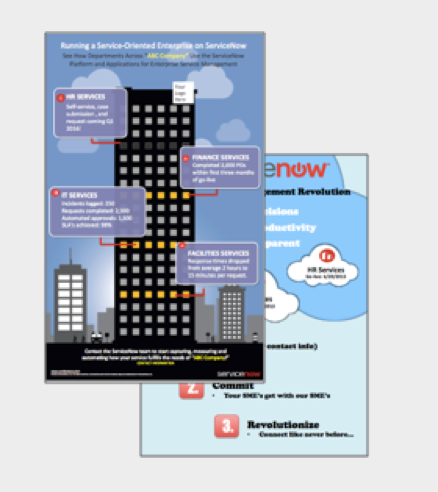From Cost to Value: Changing the IT Conversation, Part 2
When we move beyond shifting the perception of IT within the business, what comes next?
In Part 1 of this article series, we discussed the problems associated with traditional perceptions of IT’s place within the business, and how a marketer’s mindset can help overcome these obstacles.
Now, let’s assume you’ve already made your case for the value of IT within corporate strategy. At this point, it’s time to think about IT transformation from a project perspective: you need to measure value and communicate it back out.
The Three Stages of the Value Lifecycle
Here’s where I like to introduce the value lifecycle, a three-step framework to ensure that you deliver value. Flexible and iterative, the cycle applies to strategic planning and agile projects equally well.
- Plan: Insist on identifying areas of value and tying them back to business outcomes. Then, leverage existing financial models, define KPIs, and determine a method to capture data. All of this information will help you prepare your business case.
- Execute: Earn approval for your case. Once the project is underway, track the data. If baseline metrics have not been established in key areas, create them.
- Realize: Report value metrics to team. Retool processes as needed for continuous improvement. Most importantly, communicate value outcomes back to the business, and be ready to anticipate value slip-ups with ideas on how to address them. Strong BRMs develop strategies for when value is not being recognized.
It’s key to remember that value isn’t necessarily measured in dollars…no matter which values you target, though, there must be associated metrics.
It’s key to remember that value isn’t necessarily measured in dollars. You can use the value lifecycle to realize value in injury reduction, in increased customer (or employee) satisfaction, and other areas of success.
No matter which values you target, though, there must be associated metrics. If you can’t measure value, then the lifecycle cannot help you assess and refine your work. Besides, the need to track certain KPIs can change the entire scope of a project. This means value-planning conversations must happen early-on in the project.
Once you’re armed with strategic, data-driven metrics, you can effectively report on the value of IT. Put your marketer’s hat back on—it’s time to make a plan for sharing your work.
Going Full Circle as a BRM
What comprises a marketing plan for IT? It depends on the story you’re trying to tell, but in the age of “edutainment,” think eye-catching, narrative-driven, consumable communications.

Build infographics with free templates, schedule a BRM webinar to educate staff on your role, or launch weekly roundup emails highlighting your less visible work. (How’s “100% of our systems performed without a hitch last week” for an attention-grabbing subject line?) Combine and remix as needed.
In Part 1 of this article series, we identified how IT converges with the larger corporate strategy. Now, we’ve come full circle from articulated strategy to delivered value. Sounds like a long journey, right?
Again, corporate culture doesn’t change overnight, but it’s up to you as the BRM to lead the charge.
Your journey can start tomorrow. Below are some best practices you can incorporate into your work. Here are some ways you can support IT’s transformation from a cost center to a value center:
- Research how IT initiatives tie into the larger corporate strategy. If they don’t, how might they?
- Implement the value lifecycle as much as possible. Make value planning and value harvesting the first and last steps of any project, regardless of scale.
- Choose the right technology to help you. Provide more value to your organization by making more time for the things that matter. By managing the time spent on manually tracking documents and processes, you can spend more time on the partnership that drive success. Tools like ServiceNow help you track IT value and report it back out in one fully integrated platform.
- Stop talking in terms of cost, and start talking in terms of value—in strategy meetings, in reviews, and especially in your own work.
Technology is changing business more quickly than ever. That’s why it’s a smart move to insist on IT’s role as a strategic partner: it helps us communicate our value and better position our organizations to grow with technology.
To get there, we need to change the conversation in order to transform IT from a cost center to a value center. As BRMs, it’s up to us.
Insisting on IT’s role as a strategic partner helps us share our value and better position organizations to grow with technology.
Jeannine McConnell is a supporting member of the Project Management Institute, with certifications in Program Management, Project Management, as well as the IIBA with a certification in Professional Business Analysis. Jeannine also holds a Six Sigma Green Belt with a focus on transactional activity, and is ITIL certified. More recently, Jeannine become a contributing thought leader to Business Relationship Management Institute and holds a BRMP® certification. She is also a contributor on some of Microsoft Press’ best-selling publications on software engineering. She currently holds the role of Executive Strategist at ServiceNow, where she supports enterprises who want to change how their employees work.

Some very good points. It should be stressed that this is a new muscle that will take some regular working to make it strong and reflexive in nature. It will feel awkward at first but the more you practice this, the easier it gets.